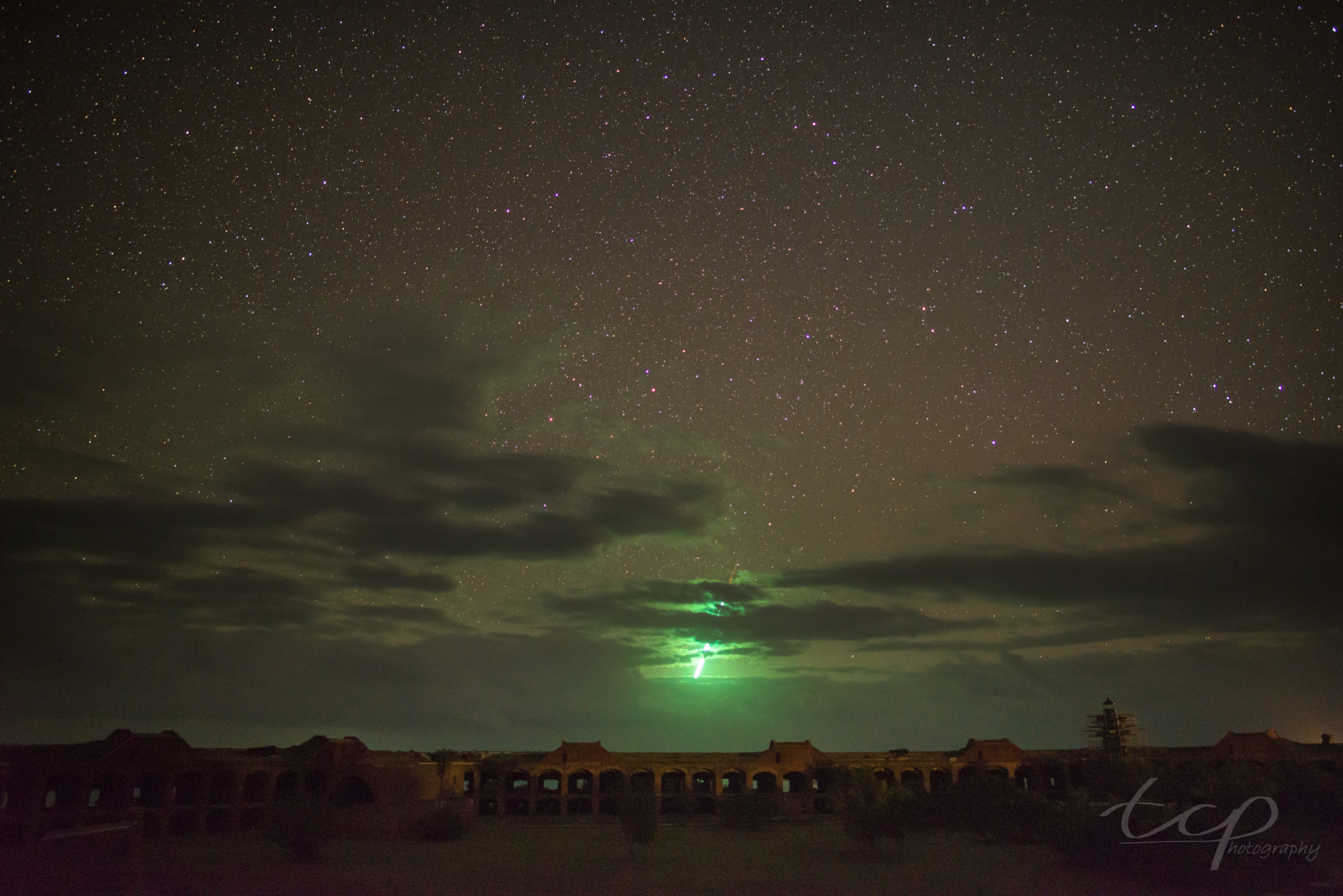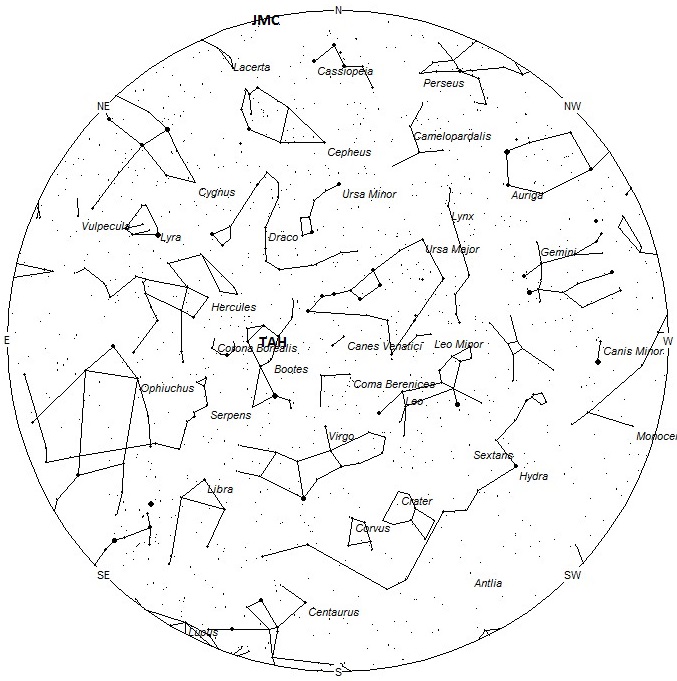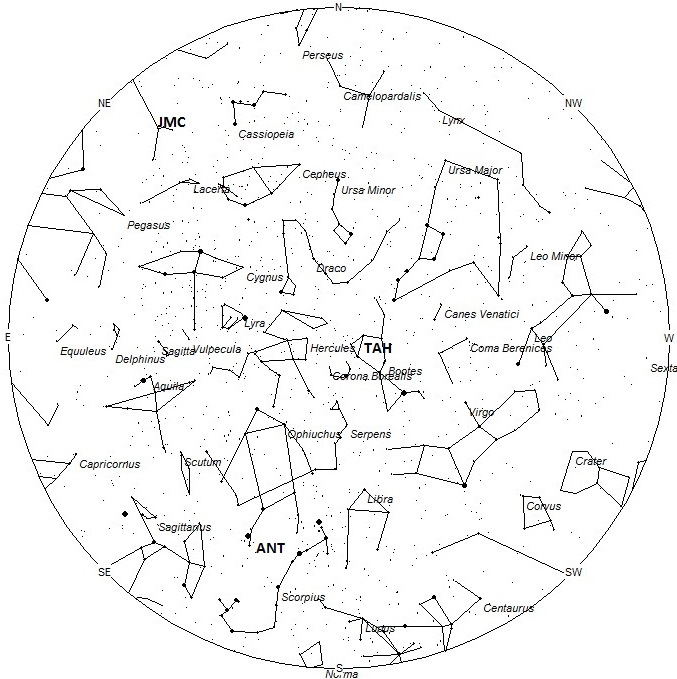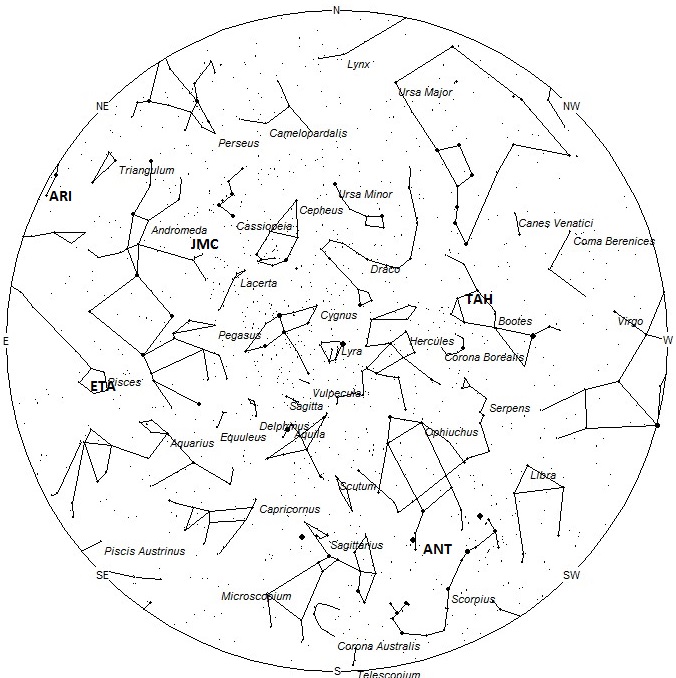
During this period the moon reaches its full phase on Saturday May 18th. At this time the moon lies above the horizon all night long, making meteor observations difficult at best. As the week progresses the moon’s phase will wane and it will rise later each night. This will provide some dark skies between dusk and moon rise but unfortunately this is a very slow time for meteor activity. The estimated total hourly meteor rates for evening observers this week is near 2 for those viewing from the northern hemisphere and 3 for those located south of the equator. For morning observers the estimated total hourly rates should be near 4 as seen from mid-northern latitudes (45N) and 9 as seen from tropical southern locations (25S). The actual rates will also depend on factors such as personal light and motion perception, local weather conditions, alertness and experience in watching meteor activity. Rates are reduced by moonlight during this period. Note that the hourly rates listed below are estimates as viewed from dark sky sites away from urban light sources. Observers viewing from urban areas will see less activity as only the brightest meteors will be visible from such locations.
The radiant (the area of the sky where meteors appear to shoot from) positions and rates listed below are exact for Saturday night/Sunday morning May 18/19. These positions do not change greatly day to day so the listed coordinates may be used during this entire period. Most star atlases (available at science stores and planetariums) will provide maps with grid lines of the celestial coordinates so that you may find out exactly where these positions are located in the sky. A planisphere or computer planetarium program is also useful in showing the sky at any time of night on any date of the year. Activity from each radiant is best seen when it is positioned highest in the sky, either due north or south along the meridian, depending on your latitude. It must be remembered that meteor activity is rarely seen at the radiant position. Rather they shoot outwards from the radiant so it is best to center your field of view so that the radiant lies at the edge and not the center. Viewing there will allow you to easily trace the path of each meteor back to the radiant (if it is a shower member) or in another direction if it is a sporadic. Meteor activity is not seen from radiants that are located far below the horizon. The positions below are listed in a west to east manner in order of right ascension (celestial longitude). The positions listed first are located further west therefore are accessible earlier in the night while those listed further down the list rise later in the night.
These sources of meteoric activity are expected to be active this week..
Details on each source will continue next week when viewing conditions are more favorable.
| SHOWER | DATE OF MAXIMUM ACTIVITY | CELESTIAL POSITION | ENTRY VELOCITY | CULMINATION | HOURLY RATE | CLASS |
| RA (RA in Deg.) DEC | Km/Sec | Local Daylight Saving Time | North-South | |||
| tau Herculids (TAH) | Jun 03 | 14:36 (219) +37 | 15 | 01:00 | <1 – <1 | III |
| Anthelions (ANT) | – | 16:44 (251) -23 | 30 | 02:00 | 1 – 2 | II |
| eta Aquariids (ETA) | May 07 | 23:16 (349) +04 | 66 | 09:00 | <1 – 3 | I |
| June mu Cassiopeiids (JMC) | Jun 08 | 23:40 (355) +48 | 42 | 09:00 | <1 – <1 | IV |
| Arietids (ARI) | Jun 08 | 01:48 (027) +21 | 41 | 11:00 | <1 – <1 | II |
 American Meteor Society
American Meteor Society



I just saw one. A very bright one tonight May 20,2019 at 9:42 pm. Awesome. Been years since I saw one.
I saw a super bright one about 10:42! It was amazing! I
Brilliant bright green fireball spotted at 10:44 pm on May 21. Appeared at the cloud line and fell over the ranges east of Palmerston North. Simply amazing to see.
me and my colleague saw a huge green tail on something in the sky while looking at the bright moon after our shift at work 01.45am (waited for G.O.T ) Sunday May 19, 2019 Shropshire uk. I am still in Awe and cannot find any pictures, images or sources from anyone else. It was beautiful.
5/22/19 saw one in Wisconsin looking east at ~10:15 pm blueish green color
About 12:43 May 25 2019 i just saw a big one it was green and it was fast, i guess it’s a fireball. My heart was beating so fast it was amazing.
I saw a daytime meteorite from Oklahoma looking southeast and it was green blue color. This was from Enid looking towards Stillwater on 25 June 19 while coaching a little league baseball game around 1845hrs. It was cool.